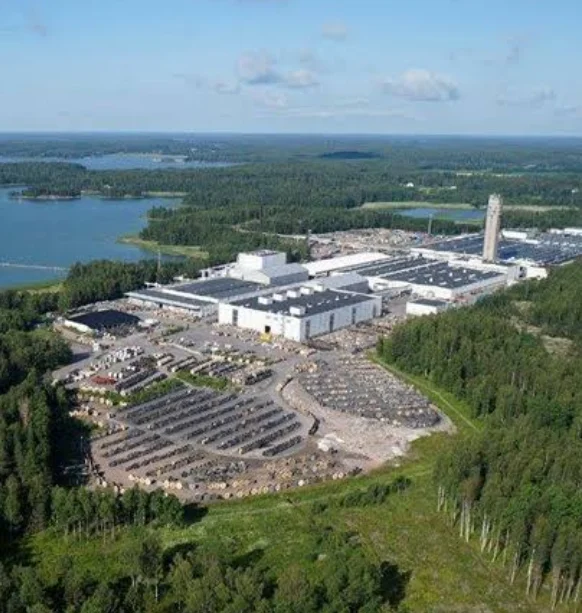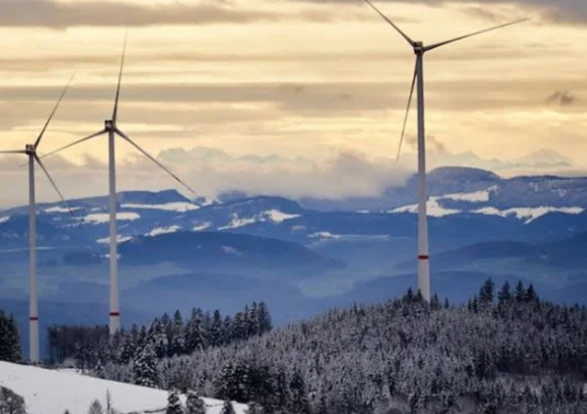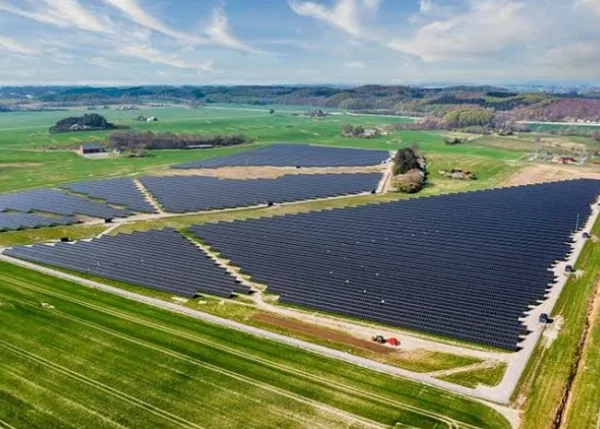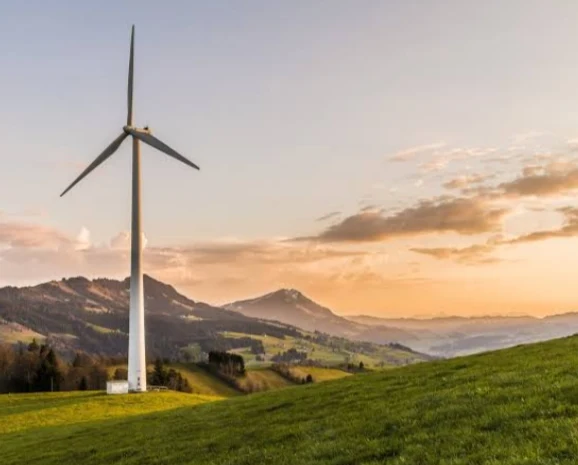▶️ Powering Up North: Finland's Landscape of Renewable Energy
Finland, the land of a thousand lakes and endless forests, is also forging a path towards a sustainable future fueled by renewable energy sources.
With ambitious goals and a commitment to green innovation, the country is rapidly transforming its energy landscape, offering valuable insights for other nations aiming for similar transitions.
Finland's impressive progress in embracing renewable energy demonstrates the potential for a sustainable future. The country's commitment to ambitious goals, coupled with strategic investments and technological innovation, serves as an inspiration for other nations on their paths toward a cleaner and greener tomorrow. As Finland continues its journey, the lessons learned and solutions developed will undoubtedly contribute to a global shift towards a renewable energy future.
▶️ History of Renewable Energy Development in Finland: A Path Less Traveled
Finland's journey towards renewables hasn't always been a smooth path, but it's a fascinating one nonetheless. Here's a glimpse into its key milestones:
Early Reliance on Hydropower (Pre-1970s):
- Finland's hydropower potential was tapped early on, with the first major hydroelectric plant (Imatra) commissioned in 1929.
- Hydropower became the dominant source of electricity, especially in the post-WWII era, reaching its peak share of over 90% in the 1970s.
Oil Embargo and Diversification (1970s-1990s):
- The 1973 oil crisis exposed Finland's dependence on imported fossil fuels, prompting a shift towards diversification.
- Nuclear power entered the scene, with four plants built between 1972 and 1995.
- Biomass gained traction, particularly for district heating and combined heat and power (CHP) generation.
- Wind power saw its first pilot projects in the 1980s, but development remained slow.
Renewables Gain Momentum (2000s-Present):
- The 2000s witnessed a renewed focus on renewables, driven by EU mandates and environmental concerns.
- Wind power experienced significant growth, particularly with the construction of large onshore farms like Kalajoki.
- Biomass continued to play a crucial role, but concerns about sustainability led to a shift towards more responsible practices.
- Solar power started gaining traction, initially through large-scale solar thermal projects and gradually shifting towards distributed generation with rooftop panels.
Reaching for New Heights (2020s-Onwards):
- Finland set ambitious targets for renewable energy, aiming for 55% by 2025 and 70% by 2035.
- Offshore wind development received major impetus, with projects like HaiSea poised to significantly boost wind power capacity.
- Investments in innovative technologies like biofuels and energy storage are accelerating.
- Public acceptance of renewables continues to grow, paving the way for smoother development and integration.
Key Takeaways:
- Finland's historical reliance on hydropower laid the foundation for renewable energy development.
- Geopolitical and environmental factors have continuously shaped the country's energy choices.
- Diversification has become crucial, with wind, biomass, and solar playing increasingly important roles.
- Ambitious targets and technological advancements are propelling Finland towards a sustainable future powered by renewables.
Additional Points:
- Finland's unique geographic location influences its energy choices, with abundant forests favoring biomass and strong winds supporting wind power development.
- The country fosters close collaboration between research institutions, industries, and policymakers to drive innovation and overcome challenges.
- While Finland has achieved remarkable progress, challenges remain, including grid integration, public acceptance in certain areas, and balancing environmental sustainability with economic considerations.
▶️ Finland's Renewable Energy Landscape: Key Statistics
Leading the Charge with Renewables:
- Current Status: As of 2022, renewable energy accounted for 58% of Finland's final electricity consumption, surpassing the national target of 55%. This impressive share is further broken down as:
- Hydropower: 35%
- Wind power: 12%
- Biomass: 9%
- Solar power: 2%
- Future Goals: By 2035, Finland aims to achieve carbon neutrality, with renewables expected to provide 70% of the country's total energy demand. Additionally, the government plans to phase out coal entirely by 2029.
Key Players and Technologies:
- Hydropower: Remains the backbone of Finland's renewable energy mix, with several large hydroelectric plants contributing significantly. However, new investments are focusing on smaller-scale, run-of-the-river projects.
- Wind power: The wind energy sector is experiencing rapid growth, with both onshore and offshore projects gaining momentum. Finland boasts the largest onshore wind farm in Europe (Kalajoki) and has ambitious plans for offshore wind development in the Baltic Sea.
- Biomass: Primarily sourced from wood waste and biofuels, biomass plays a crucial role in heating and combined heat and power (CHP) generation. Research and development are underway to explore advanced biofuels for transportation and other sectors.
- Solar power: While currently a smaller contributor, solar energy is seeing significant growth, particularly in the distributed generation segment with rooftop solar panels.
Challenges and Opportunities:
- Geographic factors: Finland's dispersed population and harsh winter conditions pose challenges for grid integration and infrastructure development, particularly for wind and solar projects.
- Public acceptance: While generally supportive of renewable energy, concerns about visual impact and land use require careful consideration and community engagement.
- Technology advancements: Continued advancements in storage solutions, smart grids, and renewable energy technologies are crucial for further optimization and integration.
Finland's Renewable Energy Landscape: Key Statistics Table
| Statistic | Value (Year) | Source |
|---|---|---|
| Renewable Energy Share of Final Electricity Consumption | 58% (2022) | Ministry of Economic Affairs and Employment of Finland |
| Hydropower Contribution | 35% (2022) | Finnish Energy Industries |
| Wind Power Contribution | 12% (2022) | Finnish Wind Power Association |
| Biomass Contribution | 9% (2022) | Finnish Energy Industries |
| Solar Power Contribution | 2% (2022) | Finnish Energy Industries |
| Target for Renewable Energy Share of Total Energy Demand (2035) | 70% | Ministry of Economic Affairs and Employment of Finland |
| Target for Coal Phase-Out | 2029 | Ministry of Economic Affairs and Employment of Finland |
| Rank in 2023 Climate Change Performance Index | 4th | Germanwatch & Climate Action Tracker |
| Per Capita Greenhouse Gas Emissions (compared to EU) | Among the lowest | Eurostat |
| Share of District Heating from Renewables | Over 90% | Finnish Energy Industries |
Additional Notes:
- Data for specific technology contributions may vary slightly depending on the source.
- Greenhouse gas emissions and district heating statistics refer to the latest available data, which may not be from 2022.
Additional Statistics:
- Finland ranks 4th in the world in the 2023 Climate Change Performance Index.
- The country's per capita greenhouse gas emissions are among the lowest in the European Union.
- Over 90% of Finland's district heating comes from renewable sources.
▶️ Gazing into the Crystal Ball: Future of Renewable Energy Development in Finland
Predicting the future is always tricky, but Finland's commitment to renewable energy and ongoing advancements paint a promising picture. Here's a peek into what the future might hold:
Dominant Duo: Wind and Solar Take Center Stage:
- Offshore Wind: With the recent green light for large-scale projects like HaiSea, offshore wind is poised to become a major player, potentially contributing up to 50% of Finland's electricity demand by 2050.
- Solar Power: Technological advancements and cost reductions are expected to propel solar energy growth, particularly in the distributed generation segment with rooftop panels and building-integrated photovoltaics (BIPV).
Biomass Transformation:
- Focus on Sustainability: Sustainable forestry practices and advanced biofuels like bioethanol and biogas are likely to dominate, ensuring responsible biomass utilization.
- Combined Heat and Power (CHP): Biomass will continue to play a vital role in CHP plants, especially for district heating, but integration with other renewables requires optimization.
Technological Twists:
- Energy Storage: Advancements in battery storage and other technologies will be crucial for managing the variability of wind and solar power, enabling smoother grid integration.
- Smart Grids: Digitalization and intelligent grid management systems will optimize energy distribution and facilitate the integration of diverse renewable sources.
- Hydrogen: While still in its early stages, hydrogen might emerge as a clean fuel option for transportation and industrial applications, requiring further research and infrastructure development.
Community and Collaboration:
- Public Engagement: Continued efforts to increase public awareness and address concerns about visual impact and land use will be crucial for ensuring social acceptance of renewable projects.
- Cross-Border Cooperation: Collaboration with neighboring countries on issues like grid infrastructure and energy trading can contribute to regional decarbonization efforts.
Challenges to Navigate:
- Economic Viability: Balancing the need for affordable energy with investments in new technologies will require innovative financing models and cost-competitive solutions.
- Policy Stability: Clear and long-term policy frameworks are essential to attract investments and ensure market stability in the renewable energy sector.
- Grid Modernization: Upgrading the existing grid infrastructure is crucial to accommodate the increasing share of variable renewables and ensure network stability.
Overall Outlook:
Despite the challenges, Finland's future appears bright, with renewables expected to dominate its energy mix. Continued innovations, strategic investments, and collaborative efforts will be key to achieving climate goals and securing a sustainable energy future for the nation.




